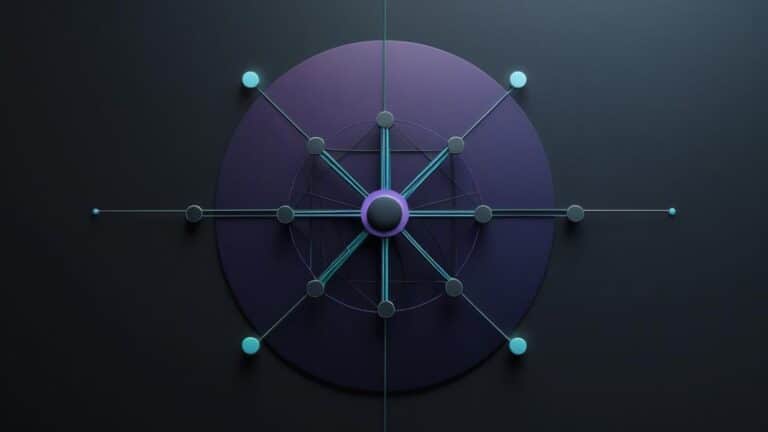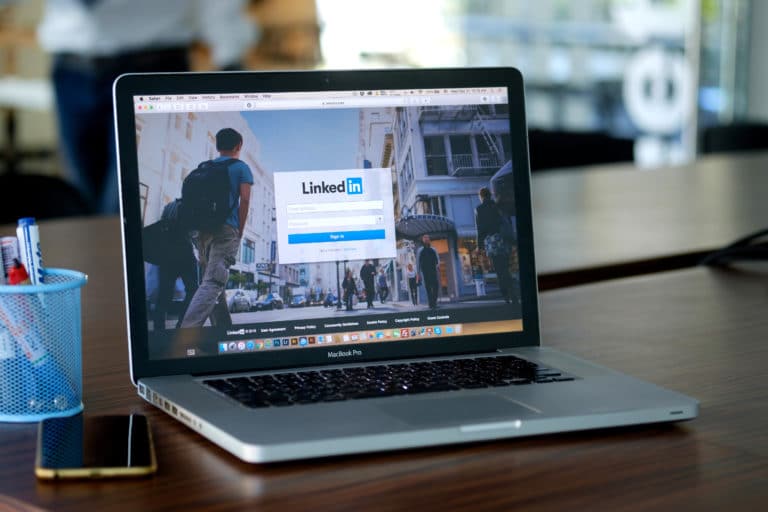When it comes to drawing in your prospective customers and closing more deals, your marketing approach should be anything but uniform.
Instead, the B2B marketing content your organization is creating and deploying needs to be targeted and precise, in order for it to actually be effective and lead to the conversions you dream about. Specifically, your organization needs to be creating buyer’s journey content, which is intended and created for customers who are at each stage of the buyer’s journey.
Think about it like this: it’s rare that B2B buyers wake up, and without any prior knowledge or information about your company and product, purchase something from you.
While this occasionally happens, these “impulse buyers” are far and few between. Research tells us that B2B buyers are “usually 57% of the way toward a decision” before they even speak to a sales team, and that 77% of buyers report “spending more time on research” before buying, when compared to previous years.
What this means is that instead of “impulse shopping,” B2B buyers typically experience various stages of a buyer’s journey (which we’re going to discuss in depth), where they first become aware of a pain point and start to consider solutions for it, before ultimately arriving at a decision for a fix.
Because organizations are encountering customers who are at various stages of the customer journey, it’s important that the marketing content that’s being created is designed to meet customers where they actually are.
Instead of simply deploying a one-size-fits-all approach to marketing content, B2B organizations need to understand why deploying specific buyer’s journey content matters, how it ties into an SEO strategy, what this different type of content actually looks like IRL, and know how to create this content for different levels of search intent.
What is a Buyer’s Journey?
The buyer’s journey is a key piece of inbound marketing strategy that HubSpot created years ago. It’s also a bread-and-butter piece to our entire inbound marketing map that we swear by (and has grown traffic by 400%, revenue by 300% and 30,000 leads in one year for a First Page client). We always build a Buyer’s Journey before we start creating content.
First, it looks at each stage of the marketing funnel (three stages being Top of the Funnel (TOFU); Middle of the Funnel (MOFU); Bottom of the Funnel (BOFU), and maps each of those stages to:
- Problems
- Solutions
- Content Types
- Keywords
For example: in the Top of the Funnel: what problems are your users researching online when they’re first getting started with purchasing a product like yours. This is the verrry beginning of their buying process. What solutions might they be researching to solve this problem, what types of content are they looking to consume about these problems and solutions, and what keywords are included in their search.
Why Your Inbound Strategy Needs a Buyer’s Journey
With a Buyer’s Journey mapped out, you’ll be able to REALLY understand the content your potential customers are looking for and how you can move your prospects from TOFU to MOFU and then everyone’s goal: to BOFU by understanding what they need at every stage before purchase. This will save you a ton of time and dollars with a content strategy that isn’t “throw sh*t against the wall and hope it sticks” (which is what we see most companies doing). Oftentimes we’ll look at a brand’s blog, and the topics are completely irrelevant to what their customers are looking for to make a decision on their product. They might be too high level on generic topics, or they might be too customer-focused on company announcements. Don’t waste your time with a content strategy like this because your blog will then a) appear fluff to your prospects and customers, b) not build traffic and c) not be reporting revenue.
Understanding The Buyer’s Journey
When we’re talking about creating buyer’s journey content, it’s critical to first understand the nuances of the buyer’s journey. What is the B2B buyer’s journey exactly, what are the stages of this experience, and what are your prospects actually going through at each stage?
The B2B buyer’s journey is the experience (or journey) a buyer goes through in order to purchase something. It is the path they take before they actually become your customers.
Understanding what the buyer’s journey looks like at your organization is useful for several different reasons.
For example, when your typical customer’s buyer’s journey is well-understood, your sales team can target their approach to address your buyer’s specific pain points and speak to them in a way that demonstrates the value of your product. When it comes to marketing content, having a comprehensive picture of your buyer’s journey allows your organization to create valuable content that tangibly solves pain points for buyers, and which actually leads to more conversions.
The buyer’s journey is typically broken down into three distinct steps.
Awareness
During this first stage of the buyer’s journey, the customer first becomes aware they have an issue. They realize they have a pain point, and that they want a solution, although they likely don’t know what that solution is just yet.
For example, a person might realize that their back pain is really starting to bother them, and they’d love to figure out a solution for it, so they head to Google.
The awareness stage is interesting in the B2B buyer’s journey because at this time, just about any solution might seem appealing. Buyers are open to hearing about good solutions to their problems, and they likely don’t know about your organization just yet.
This is when the ideas start flowing, and yours needs to be the strongest. That’s what the reader remembers.
Consideration
During the consideration stage, your prospects are digging into research, looking into potential solutions to their pain point.
During this point, they start to learn about different options, and identify ones that might work best for them. If someone is suffering from back pain, they might consider seeing a physical therapist, practicing yoga, or getting a standing desk, for example.
During the consideration stage, your B2B buyers are weighing their options carefully. This is where the specifics of what your organization offers might come into play, and prospects start to differentiate between their various solutions.
Decision
Finally, prospects arrive at the decision stage, where they select the solution to their pain point, whether it’s a product or service. It’s important to understand that while buyers have settled on a choice, they haven’t actually completed the transaction just yet.
In our example, the person with back pain might have decided they really need to see a doctor, but they didn’t make the appointment just yet.
Have you ever decided to buy something, but changed your mind before you actually did? That’s what can happen during the decision stage with B2B buyers.
At this point, buyers are almost across the finish line, but they might still be working through the details and toying with their last considerations.
How Are These Tied To Intent?
When it comes to creating B2B buyer’s journey content that is precise, targeted and successful at converting, we need to not only look at the buyer’s journey alone. That’s because prospects are never just walking through the buyer’s journey in a vacuum.
Instead, when buyers are actually conducting the online search for the solutions to their pain point, they’re going to have a certain search goal in mind. This is called search intent, and it is what informs what type of marketing content buyers find useful.
Search intent reflects what prospects are actually searching for when they’re looking for solutions to their pain points, and what the purpose of their search is. It answers the question “What are my prospects really typing into Google?” and reflects the goals that buyers have when they’re researching a solution.
In order for buyer’s journey content to be successful, it needs to actually address a real-world pain point which your buyers are experiencing, and which they’re searching for solutions for online. This means that buyer’s journey content needs to not only be created with the buyer’s journey in mind, but that it needs to fit the criteria of what prospects are searching for online.
Prospects typically experience search intent in different stages:
Informational
During this stage of search intent, your customer is conducting their initial rounds of research. They’re learning the basics, and they’re gathering the facts, data, and resources available. The search queries they use might be very general, and they are essentially looking to learn more about a topic.
Navigational
When a buyer is acting with navigational search intent, they already know where they want to end up. These queries help users land on a specific webpage, and usually happen when a user has already conducted research, or they already know about a product or service. Examples of a navigational search include “Gmail login,” “RevenueZen blog,” or “Apple homepage.”
These searches are fairly specific, and users are unlikely to comb through many pages of results.
Commercial
When someone wants to know more about brands, products, or services, they’re usually expressing commercial search intent. This isn’t quite the same as transactional intent (when someone is ready to buy something), but it is also typically a “bottom of the funnel” query. Examples of commercial search intent is if someone is searching a specific brand, product, reviews of certain items, or comparisons of products.
Transactional
Someone is in this stage of search intent when they’re ready to actually buy something. They have their credit card at the ready, and they know specifically what they want to buy. Searchers at this stage usually have specific goals in mind, and are searching keywords that will lead them to complete the transaction.
Why Is Search Intent Important?
It might be clear by now, but creating buyer’s journey content is useful because it speaks to specific customer profiles, and meets the needs of buyers who are at various stages of the journey. But how does search intent come into play?
As it turns out, understanding search intent and ensuring that content is in alignment with it is critical to creating content that converts. When it comes to B2B marketing and SEO strategies in 2024, keyword stuffing doesn’t help content rank, and users don’t want to spend time reading content that doesn’t provide them with value.
What does work is showcasing your brand as authoritative, helpful, and the ultimate source of truth for the solution your buyers are looking for. And this means understanding how your content can address search intent.
One in-depth case study on SEO determined that search intent is a “critical ranking factor” for content, and that without search intent, your content is ill-fated. One marketer from the case study phrased it as such:
“When you create content in alignment with what Google already sees as relevant, you have a higher likelihood of ranking. if you ignore intent and just start writing about a keyword, the odds of you missing the correct intent…”
How Does Intent Relate To Your Website’s Layout?
Search intent doesn’t only impact the work of marketing teams and the creation buyer’s journey content, and should be considered when it comes to all of your web content.
This includes the layout of your website, and all of the content that’s on it.
For example, when users reach your website, they will ideally land on pages that address their needs at their stage of search intent. After that, they should be able to naturally progress to different parts of your website which address the subsequent stages.
For example, if a prospect types a query into Google and ends up on your blog, your website should be designed in a way that seamlessly enables them to learn more about your company, schedule a call, or compare your offerings to your competitors.
Basically, they should be directed from the /blog/ or /resources/ subfolder to the /services/ or /features/ subfolder in a natural fashion.
When it comes to search intent and website layouts, organizations should consider how the layout of their website can assist prospects in going forward on their search intent journey.
What About Your Sales Process?
Search intent and the sales process go hand-in-hand. Namely, understanding and identifying search intent can be used to inform and assist the sales process.
Let’s say a buyer searches a query and ends up on your blog posts, and then progresses to submitting information to your sales team.
There are some critical data points here that shouldn’t be ignored: what query they typed in, and what information they were hoping to learn on that blog post, for example.
This will inform your sales team about what stage of search intent they are in, and your sales team can tailor their approach to address these needs.
How Do You Build A Thorough Content Funnel Strategy?
Now that we understand the different stages of the buyer’s journey and of search intent, we can use that information to build a comprehensive content funnel strategy.
Ultimately, this strategy should result in the creation of buyer’s journey content that meets the needs of prospects who are at different stages.
Top of the Funnel
Content at the top of the funnel, also called TOFU, is designed for prospects who are in the awareness stage of the buyer’s journey, and who are seeking informational content.
This content is created for prospects who are searching for the most basic information about a topic, and is designed to break down topics into simple terms.
What types of buyer’s journey content might perform well at this stage of the content funnel?
How-to guides, landing pages, infographics, knowledge base posts, and SEO blog content about your industry, products, and services are well-suited for this stage. Educational content in these formats can best answer queries that your prospects might type into Google, and provide both knowledge and solutions.
This type of content also helps your brand establish itself as an authoritative source on the topic.
You can expect buyers to find this content through organic search, but it also might tie in well with a social media marketing or email marketing strategy.
Middle of the Funnel
Next in the content funnel strategy is content for the middle of the funnel, of MOFU. This content is designed for prospects who are in the consideration stage of the buyer’s journey, and the navigational stage of search intent.
This means that prospects understand the basics of their pain points and are looking into different options for solutions, and they’re probably already aware of your company.
What types of buyer’s journey content might perform well at this stage of the content funnel?
How-to guides about more in-depth topics, product overviews, case studies, landing pages, webinars, and success stories can work well here. Buyer’s journey content for this stage can still be educational, but won’t be as surface level or “beginner” as content for the TOFU prospects.
Because these prospects likely already know your brand and its competitors, you might consider specific CTAs, having well-placed “contact us” resources, and sharing about what distinguishes your organization from its competitors.
Bottom of the Funnel
Last is this content funnel strategy is content for the bottom of the funnel, or BOFU.
This content is designed for prospects who are in the decision stage of the buyer’s journey, and the transactional stage of search intent.
This means that prospects have selected your product or service as the solution for their pain point (but they haven’t purchased just yet), and they’re searching for content that will lead them to purchase.
At this stage, certain content that leads to payments will perform well. This can include product overviews, customer reviews, competitor comparison, and success stories.
Content at this stage of the funnel will perform best when it demonstrates the value of your specific product, and can be accompanied by CTAs which are designed to close the deal, such as “Request a Demo,” “Schedule a Call,” or “Buy Now.”
How Does B2B Keyword Research Tie Into The Buyer’s Journey?
Understanding the buyer’s journey and search intent is one thing, as is understanding how they inform your buyers’ needs and decisions. But how can organizations leverage this information as it relates to them specifically, to actually reach their target customers with their marketing content?
One main method is with B2B keyword research.
You probably know that search engine (SEO) marketing has to do with keywords, or identifying keywords that relate to the content, and which are also being searched by users.
By using technical SEO practices, content can not only be valuable on its own accord, but hopefully rank in search engines, ultimately bringing in organic inbound leads.
When B2B keyword research is informed by an organization’s specific buyer’s journey, keywords can be identified which are the most useful to SEO goals, and which have the highest likelihood of success.
For example, instead of targeting a broad B2B keyword that isn’t actually being searched by your prospects, or that will be difficult to rank for, organizations can target specific keywords with the highest search volume.
The keyphrase “what does content marketing do?” leads to much less buyer-focused traffic than “content marketing services”.
The NEW Buyer’s Journey Template
The Buyer’s Journey is not a mind-blowing new piece of inbound marketing strategy. It has been around for a bit of time now, and First Page thought it was time to reinvent the old Buyer’s Journey HubSpot template since inbound marketing strategy (and Google’s algorithm) has evolved to be a lot more complex than it was 5-10 years ago. With each new client we take on, we tweak this a bit more to work specifically for tech and SaaS companies, so we’re driving qualified leads and traffic.
Search Intent
First, the most important thing we’ve layered on top of the original HubSpot template is Google’s (arguably) biggest change in 2019: searcher’s intent. You can no longer simply build content around every keyword you hope your product will rank for. You have to understand what the search intent is for the keyword. For example, your project management platform might want to rank for “project management,” but the search intent for this is educational, not transactional. People searching for project management are being served organic search content that teaches them what project management is (by Wikipedia etc.), NOT project management platforms. So, this search intent is not a match for your keyword, and it’s a better to choose something like, “project management platforms.” What’s interesting about this is that you can target “project management” in PPC and show up at the top. But if you want to get in the organic search results, it would be near impossible for “project management.”
Understanding the search intent for keywords is important so that you’re choosing the right keyword phrases to target so that your content can rank organically. And as noted above, these are likely not exactly what you’re targeting in search advertising.
Fourth Funnel Stage: Growth
The traditional marketing funnel has always included three stages: top of the funnel (awareness), middle of the funnel (consideration) and bottom of the funnel (purchase). We call these TOFU, MOFU and BOFU. But, First Page has also added a fourth stage called GROWTH because we feel marketing does not end after acquisition. There is so much that goes into customer marketing so you don’t lose people you paid top dollar to find and convert. The Growth stage should be focused on content that builds loyalty and trust with your customers, while also educating them on your products (and upselling them!) These efforts should work to increase the lifetime value of your customers (LTV). So, because we think it’s important to outline content you’ll create every month to speak to your customers, not just your prospects, we’ve added a fourth stage to our Buyer’s Journey.
Layering On Personas (and Your Product(s)!
When you’re a tech and/or SaaS company, you likely have a beautiful product you’re building that solves customer’s pain points using the beauty of technology, automation and algorithms. And you should have also worked on personas for each one of your products (or hired an agency that did this as part of their inbound strategy). Sometimes one product will have many personas, and each one of your personas could have a different intent and product. So we’ve added a layer of tying your buyer’s journey to the technology you’re building and the person buying it.
What Can An SEO Content Agency Do To Help?
Phew, are you still with us?
As you can see, simply understanding buyer’s journey content is really just the tip of the iceberg.
When it comes to creating targeted buyer’s journey content that takes search intent and B2B keywords into consideration, most organizations simply don’t have the manpower or resources to get it done on their own.
That’s where an SEO content agency comes into play. Leading SEO content agencies go far beyond keywords to ensure that you’re creating content that is directly valuable to your buyers, and that addresses specific needs at different stages of the buyer’s journey.
For example, here at RevenueZen, our multifaceted approach to content marketing includes B2B keyword research which maps keywords to the correct stage of your buyers’ journey, technical SEO audits, link building & off-page SEO, and on-page optimizations.
Building a website and content strategy that supports your specific buyer’s journey will lead to a more streamlined buying experience
When you’re putting in the time and resources into a website and content strategy, your business deserves to have it actually meet your business goals.
By understanding the different stages of the buyer’s journey along with search intent, and creating content for prospects who are at these various stages, your organization can create powerful, valuable content that actually converts, and that doesn’t just sit there forgotten in the depths of Google’s pages.
If you’re ready to elevate your content strategy so that it’s aligned with the journey of your buyers, we’re here to help. We help ambitious B2B brands break their previous record of organic-sourced revenue with our SEO services for B2B companies. You can contact us today to get started.




